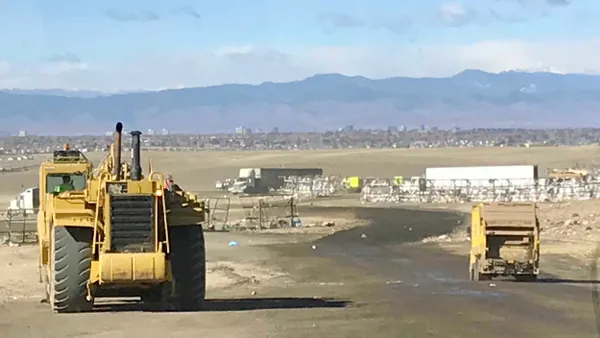This story has been updated with comment from the GAO.
Dive Brief:
- The Government Accountability Office (GAO) announced in late December it was opening an investigation into whether federal Superfund sites are adequately prepared and secured to protect human health and the environment following a natural disaster, as first reported by Buzzfeed News.
- In an email to Waste Dive, Environmental Protection Agency (EPA) spokesman Jahan Wilcox said it would "only be prudent" to react or respond to the investigation after GAO issues a report. In an email sent to Waste Dive, Alfredo Gomez, director for Natural Resources and Environment at the GAO, said they had not yet started the work, and that the review would start "in the next couple months." In general, Gomez said, the GAO's work takes about a year.
- Jan. 8 is also the date that the House Committee on Energy and Commerce has asked EPA Administrator Scott Pruitt to respond to a request for information regarding how EPA prioritized its 21 Superfund sites for "immediate, intense action." The committee asked for clarifying information on how sites are selected and how the administrator's involvement in those sites would actually expedite cleanup. In an emailed statement, an EPA spokesperson said that the agency would "respond through the proper channels," but did not offer further clarification.
Dive Insight:
One of the most high-profile Superfund sites lately has been the San Jacinto Waste Pits near Houston. Following Hurricane Harvey, the EPA announced a $115 million cleanup plan to remove some waste and shore up existing coverage, keeping the site sealed. Those plans have faced some delay, however.
The San Jacinto site was placed on EPA's recently-released list of 21 Superfund sites for immediate and intense action. As noted by EPA at the time, the selected sites are not necessarily the most contaminated or where human health are most at risk. Instead, the listed sites present opportunities for Pruitt to "act quickly and comprehensively," however those terms have only been broadly defined. Additionally, placement on the list does not necessarily mean extra federal funding toward the project.
Because the congressional letter is as of yet unaddressed, it is unclear how EPA decided which sites would go on the list, or what specific plans for each site may be under consideration. It is also unclear how effective any intervention from the agency could be without providing extra funds for the work of cleanup and remediation.
What is clear, however, is that Pruitt has been prioritizing Superfund cleanup since taking the helm as administrator. In addition to creating the "top 21" list, Pruitt's EPA recently announced the removal or partial removal of six sites from the Superfund list, from Minnesota to Nebraska to Massachusetts.









